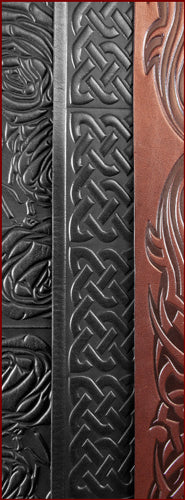 |
Hi Strummers, finger pickers and rockers! Most mass-produced (and some expensive) guitars these days are sprayed with polyurethane finishes, polyurethane being about the most bombproof surface on the planet. However, many high-end or vintage instruments from the past are a different animal, and may well be finished with nitrocellulose lacquer, French polish, or pre-modern era plastics such as" mother of toilet seat" (fake pearl) or the "mar proof" slump formed finish on many Supro electrics etc. These finishes can suffer from prolonged contact with any number of substances besides leather. Leather, fake leather, vinyl, rubber on guitar stands or wall hanging mounts, capos, and anything with adhesive (tuners) are all things to watch out for. That said, I believe that "prolonged" is the operative word here. |
Martin and Gibson both state in their literature that all straps should be removed from the guitar when it is not being played and I agree, unless it's a beater axe where cosmetics are not an issue. As far as our straps go specifically, I have this to offer; Our Latigo straps are not really an "oily" or "oil tan" leather. Though they are not soft they are dry to the touch and do not have a surface that is at all rough or abrasive. Our tooled Bullhide straps are lined with a dry chrome tan leather that is fairly soft to the touch. I can't see abrasive type wear ever being a problem with this particular strap even with the most delicate finish. I have used Latigo straps on my beater (and some high end) guitars for years with no problems, although, I don’t leave my strap on all the time. One final note; Many suede, buckskin, and other very soft leathers I’ve seen, and used, have a high level of silicone, waxes and oils in their makeup in order to create that soft "hand." I hope that this note helps you with any technical questions you had. Thanks for reading. Happy playing! Brendan |